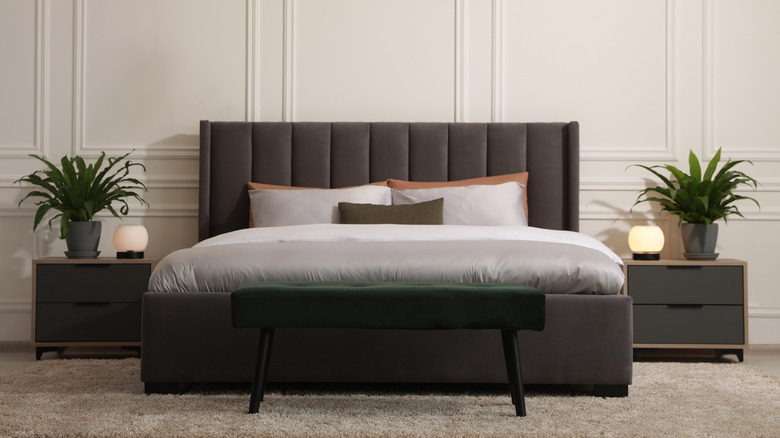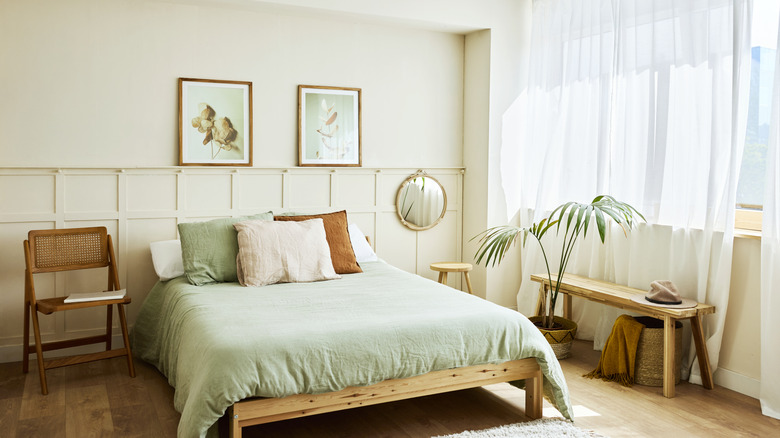The Common Decor Practice That's Outdated, And What To Do Instead
Interior design trends come and go. One of those trends is the matching bedroom set — identical dressers, nightstands, and bed frames. The style was in vogue for a long time, but now it has got to go. Yes, it's easy to find, but you'll end up with a very uniform bedroom, and nobody wants that. Chances are, you bought the whole set as a package from a big box store. What this means is that there are several other bedrooms out there with the same exact look — so much for being unique, right? Also, since each piece looks almost identical, there's not much room for creativity and character. Another issue with all furniture pieces being identical in tone, texture, and finish is that the space may lack visual interest.
Keep in mind that matching bedroom sets follow a certain design, which means they can age faster. Once that design trend goes out of style, the entire room feels outdated all at once. On top of that, matching bedroom sets often come with fixed combinations that may not really go with the layout of your bedroom. If you need only certain pieces or specific dimensions, sets can be somewhat restrictive. Plus, those ultra-coordinated sets can make a room look like a showroom rather than a lived-in space. And if you make a single mistake, like choosing mismatched lighting or adding a rug that's too small, it stands out because there's no visual variety to distract the eye or soften the imbalance. The solution is to avoid a matching bedroom set while maintaining a cohesive look.
Why mixing and matching is a better design choice for your bedroom
Mixing and matching is the quiet revolution against the outdated bedroom design trend of matching sets. It makes up for what traditional sets lack in personality and creativity, giving you more room for flexibility and visual interest. One of the main benefits of mixing bedroom items is that it adds depth and dimension. By combining different materials, textures, and styles, like a modern metal nightstand with a vintage wooden dresser, you create contrast that draws the eye and keeps the space from feeling flat. Mixing and matching also makes it easier to highlight standout pieces without everything blending into a uniform look.
Another advantage is adaptability. With mixed pieces, it's much easier to update your room when the time comes. You can replace or add a new piece without worrying about a clashing design. Mixing also encourages creative freedom. You're not locked into one style or color. Instead, you can go for a layered aesthetic that feels more authentic and less ... mass-produced. For example, you can go for a mid-century modern color palette with industrial touches or maybe minimalist with boho elements.
Plus, it allows you to plan your space better, since you can choose individual pieces that fit your room's layout and your use preferences rather than forcing in a set with pieces that don't match your needs. These can be two different yet cohesive nightstands, for instance. It's all about embracing imperfection and asymmetry. While matching sets focus on structure, mixing and matching offers a more timeless appeal. It creates a space that looks lived-in, collected, and personal — exactly what a bedroom should feel like.

